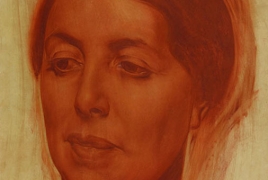
The exhibition examines trends and development of portrait painting among Russian- and USSR-born artists of the past 120 years, Art Daily reports. It includes several generations of artists of the Realist, Romantic, Social-Realist, Avant-garde, Cubist and Expressionist schools; artists who lived and worked in Russia, such as Ilya Repin and Valentin Serov; artists who moved to Paris and other places, such as Alexander Archipenko, Marc Chagall, Chaim Soutine and Alexej Von Jawlensky; and artists who immigrated to Israel, such as Joseph Constant, Chaim Gliksberg, Pinchas Litvinovsky, Yehiel Shemi and Joseph Zaritsky; and more.
Portraiture reflects more than the figure of the model. It can reveal much about artistic trends, and cultural and social mores. Portraiture was not always a major motif in Russian art. Its prominence was a slow process. For hundreds of years, the human figure in Russian art was expressed in the iconic representation of saints. Under the influence of medieval art, it relied on a spiritual expression and was not based on live models. Gradually, artists opened up to Western art and artists such as Cézanne, Picasso, and Matisse. New ways of depiction arose. There was a move from the figurative to influences from Cubism and Expressionism, which impacted on Russian portraiture.
The period under review is characterized by political and social turmoil, the Russo-Japanese War and World War I, both of which resulted in the defeat of Russia, the decline of Czarist Russia, and the Communist Revolution, World War II, and the Cold War. These upheavals lie behind the emigration of Russian artists to other countries. They also are found reflected in the Russian portraiture in the exhibition.
All works on show are from public and private collections in Israel.

